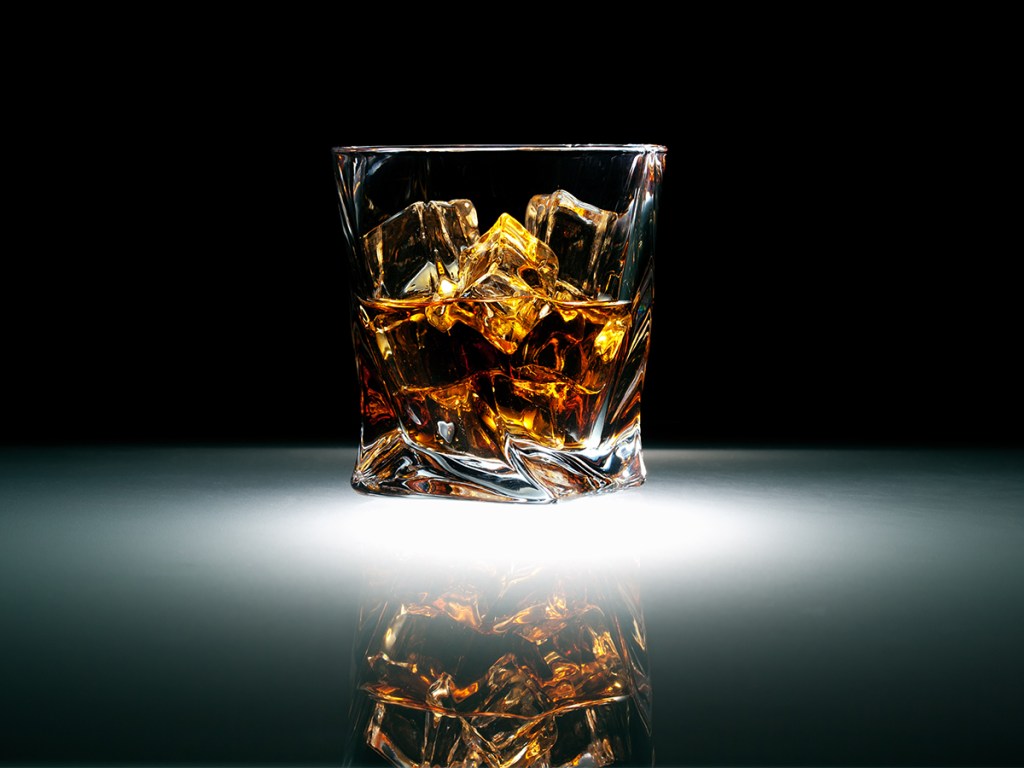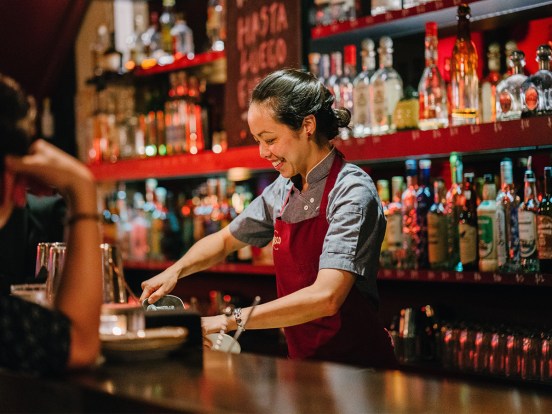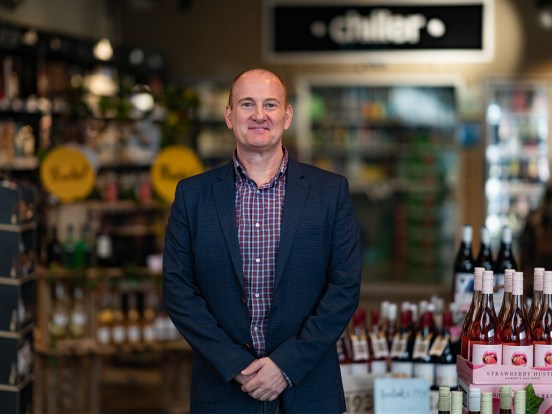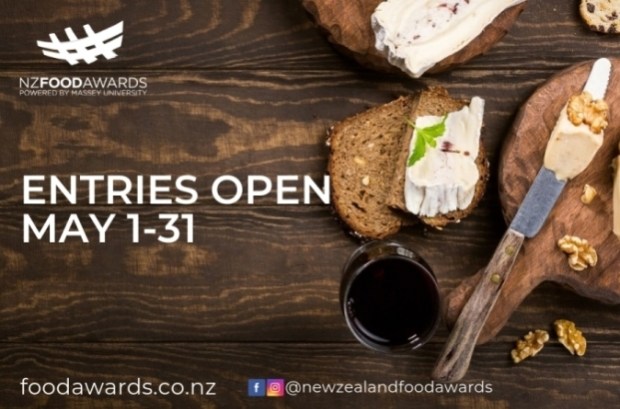With New Zealand’s tiny whisky industry taking win-after-win at both local and international spirits competitions, Tash McGill – aka the Whisky Girl – gives us an insight into what’s next, and whether it’s time to decide the rules around what exactly makes a ‘New Zealand whisky’.
There’s nothing quite like seeing Mat Thomson, of Thomson Whisky, take to a barrel with his cooper’s hammer. He picked up the empty barrel – which was originally from America – way back when, but brought it out for a special viewing at The Glengarry Malt Club last month. It was a return home of sorts, he said, given that his curiosity about making whisky got a good kickstart by attending The Glengarry Malt Club back in the early 2000s. Returning to the Malt Club in 2020 with Thomson’s brand new limited edition release of FIVE (their five year old New Zealand Single Malt) inspired Mat to bring along the barrel that FIVE was aged in.

Much like a five-year-old at show-and-tell, the film set carpenter turned whisky-maker, cooperer and copper pot still maker came alive with the cooper’s hammer in hand, swiftly raising the hoops and allowing the staves to breathe and fall gently open. The whisky enthusiasts gathered round. A five year old whisky may not sound very old at all, but it’s about the same collection of feelings a parent might express getting a firstborn off to primary school – accomplishment, possibility and incredulity at where the time has gone.
Time is a big deal in whisky circles, especially given that every passing year not only ages whisky in the cask but also adds another distillery or two to the somewhat extensive list of New Zealand whisky distilleries. For Thomson, who started in 2009, bottling some of Willowbank’s old stock, the release of a five year old whisky made by their own hands and in the cooper pot still that Mat shaped by hand, is cause for celebration. With an already impressive collection of 13 international and homegrown whisky medals and awards, this year, Thomson Manuka Smoke took out the top prize for New Zealand whisky at The Drammys and the Thomson South Island Peat Single Malt claimed gold in the New Zealand Spirits Awards.
But the real celebration for our tiny whisky industry was Cardrona Distillery’s phenomenal win pre-lockdown, taking home the award for best New Zealand’s Best Single Malt Whisky 12-years and under at the 2020 World Whiskies Awards in the UK. The “Just Hatched” is a banger of a whisky, bottled at cask strength which gives the quality of the spirit a chance to truly shine. With a little shy of four years in the barrel, these sherry and bourbon cask releases are remarkable little snapshots in time of what will be a stellar whisky for the world, but also here in New Zealand.
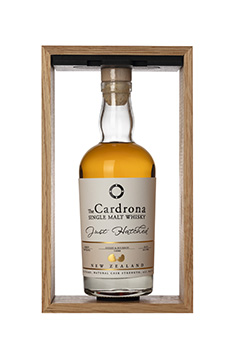
Despite the constraints of lockdowns and travel restrictions, New Zealand has managed to hold both the New Zealand Spirits Awards and The Drammys in 2020, by a whisker. These awards are judged blind, so it really is remarkable that alongside some of the great international brands, 13 medals were awarded in 2020, to seven different New Zealand distillers. In 2019, only four New Zealand distilleries won medals at the NZ Spirit Awards.
2020 NZ Spirits Awards
NZ Whisky medal award winners
The Cardrona Single Malt Whisky “Just Hatched” Dramfest 2020
Thomson Whisky Rye & Barley
Thomson Whisky South Island Peat Single Malt
Waiheke Whisky Bog Monster
Waiheke Whisky Cantankerous
1919 Distilling Kirikiriroa Release
Batch10 Manuka Smoked Whisky
Divergence Single Malt NZ Whisky – Virgin French Oak
Dunedin DoubleCask Single Malt 40%
Oamaruvian 100 Proof 50%
Oamaruvian Revolution 46%
The Cardrona Single Malt Whisky “Just Hatched” Single Sherry Cask
The Cardrona Single Malt Whisky ‘Just Hatched” Solera
Thomson Whisky French Oak & Manuka Smoke
Thomson Whisky Two Tone
Waiheke Whisky Moss
Waiheke Whisky Sweetwater
Waitui Whiskey 6YO
What is a New Zealand whisky anyway?
The Bourbon Institute was formed in 1958 to lobby the American government for internationally-recognised regulations that would protect the industry and the consumer base. At the time, Mexico was producing a large amount of Mexican bourbon, undoubtedly for a cheaper price. On May 4, 1964, it was passed into law that bourbon was a distinct product of the United States of America. Alongside the geographical boundary, there are another six key markers of ‘identity’ that make bourbon unique:
- Bourbon must be made of a grain mixture that is at least 51% corn.
- Bourbon must be distilled to no more than 160 (US) proof (80% ABV).
- Bourbon must be aged in new, charred oak barrels.
- Bourbon may not be introduced to the barrel at higher than 125 proof (62.5% ABV).
- Bourbon which meets the above requirements and has been aged for a minimum of two years, may (but is not required to) be called Straight Bourbon.
- Bourbon aged for a period less than four years must be labeled with the duration of its aging. If an age is stated on the label, it must be the age of the youngest whiskey in the bottle.
Perhaps coming out of the referendums, you might think there’s been enough talk about legislation but as the United States found, as well as Scotland, Ireland and Australia have followed suit – when the industry is beginning to find it’s legs, regulations can actually help.
Especially in the business of alcohol, distillers tend to pay taxes on their product long before they have the regulations to protect, extend and enhance the industry. That moment may have arrived for New Zealand. Distilled Spirits Aotearoa (DSA) is a New Zealand distillers offshoot of the Spirits Council and has provided the means for the discussion of New Zealand whisky regulations to commence. Now, with a premium price and market available overseas and at home for anything New Zealand made, it’s time to decide exactly what whisky made in New Zealand should be.
The challenge in front of the DSA is to create a set of regulations that are not cumbersome to creativity but will also protect a benchmark of quality and consistency for consumers. New Zealand may have toyed with prohibition as a referendum issue for nearly 60 years, but it’s remarkably easy to purchase distilling equipment. It’s making something high quality and worthy of awards, then labelling and distributing it that is the hardest part.
Some considerations include how much copper must be included in the still – 100% or just enough? 100% copper pot stills will create a significant barrier to entry for those who want to make whisky but it could be argued that is a good way of protecting a small market and those who have already invested heavily.

In addition, whisky requires a lot of grain, particularly barley. That’s something New Zealand is currently running a deficit in. According to United Wheatgrowers NZ and Federated Farmers of New Zealand, we’re only growing 70% of our requirements, so the more whisky distilleries that start, the more grain we’ll need. Can whisky really be New Zealand whisky if the grain was imported from the UK, Australia or Scotland?
The question here is about source – how important is the grain vs the quality of the spirit distillation vs the time spent in the cask? While some believe it’s all about the barrel, many would reason it an impossible equation to answer.
There’s also precedent, where other imported products are ‘finished’ or the final stages of production, be it maturing, finishing and cutting for ABV happen in New Zealand. In other industries those products are technically able to be labelled ‘Made in New Zealand’.
Robert Auld of Auld Distillery is a third generation grain farmer who believes there’s a valid case for saying New Zealand whisky should be made with New Zealand grain.
“If it’s New Zealand whisky, it either is or it isn’t and that’s everything in the bottle,” he says.
Lastly, the size and scope of the export market brings into question the importance of colouring. Common practice in Scotland in order to protect against counterfeit product in export markets, consistency on the shelf for consumer and general brand – distillers will add a natural and flavourless colouring agent to their whisky. This large scale commercial practice may not seem important for smaller distillers who intend to make excellent whisky for friends and family or the local market, but for those with an eye to building an international export market for all this award-winning New Zealand whisky, this common international practice may be required here also.
The final solutions are still being debated, negotiated and reckoned with – probably over a BBQ and a dram or two this summer, while it’s too hot to run the stills.
What’s on your summer whisky list?
For on-premise this summer, it’s going to be a scorcher, albeit socially distanced.
While specialist whisky bars can often carry an explorative, nuanced and absurd list of whisky curiosities it’s important to keep your whisky list focused and intentional, no matter how your venue is set up.
Here are some top tips for serving drams this summer….
Pay attention to your customers first and foremost. If you have customers who drink spirits neat or on the rocks, you can push your selection a lot further. But if your customers are usually beer, wine or cocktail drinkers…
- Go six deep on your list – two at entry level, two at mid-weight for flavour and price and two at the high-end top range.
- Work with your suppliers to build up from your well pour.
- Make sure to feature a refreshing, sweet enough bourbon or rye citrus cocktail on the list.
- Include at least one sherry cask finish and a big peaty Islay.
- Assuming you have a solid bourbon in the well, be sure to put an Irish on the shelf.
- Keep everything approachable.
- Make sure all your staff know the key tasting notes.
If your customer base is cocktail-savvy, you probably already have a couple of classic whisky cocktails on the list. Be sure to have a great whisky sour lined up for summer and a Manhattan for those long, balmy summer nights and…
- Build out your list as above but add a couple of recent and unusual releases such as beer barrel finished whisky or a unique wine finish.
- Make sure to include at least one curiosity bottle – something new world from England, Taiwan, Sweden or the West Coast of America.
- Be sure to include at least one of the New Zealand award winning whiskies, because people are going to love local this summer.
- Arrange a rep to come in a do a tasting for your locals and to run a training session with your staff.
Originally published in the Nov/Dec issue of The Shout NZ. Read the full issue below.
Did you know?
There are 6 ways you can catch up with The Shout NZ?
Our print magazine – November/December out now! Subscribe here.
Online, updated daily with its own completely unique content and breaking news.
Our weekly newsletter – free to your inbox! Subscribe here.
Our digital magazines – the latest issues are online now.
We are also on Facebook and Instagram!


